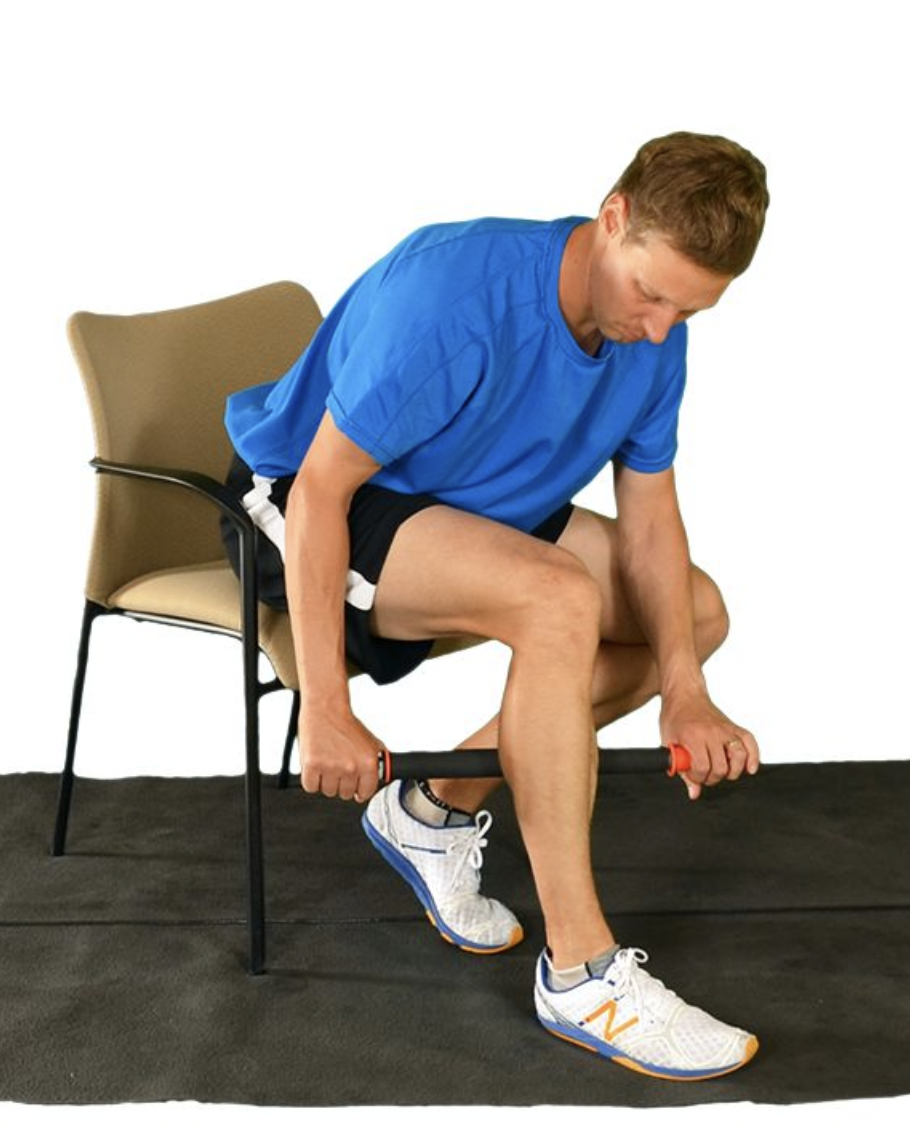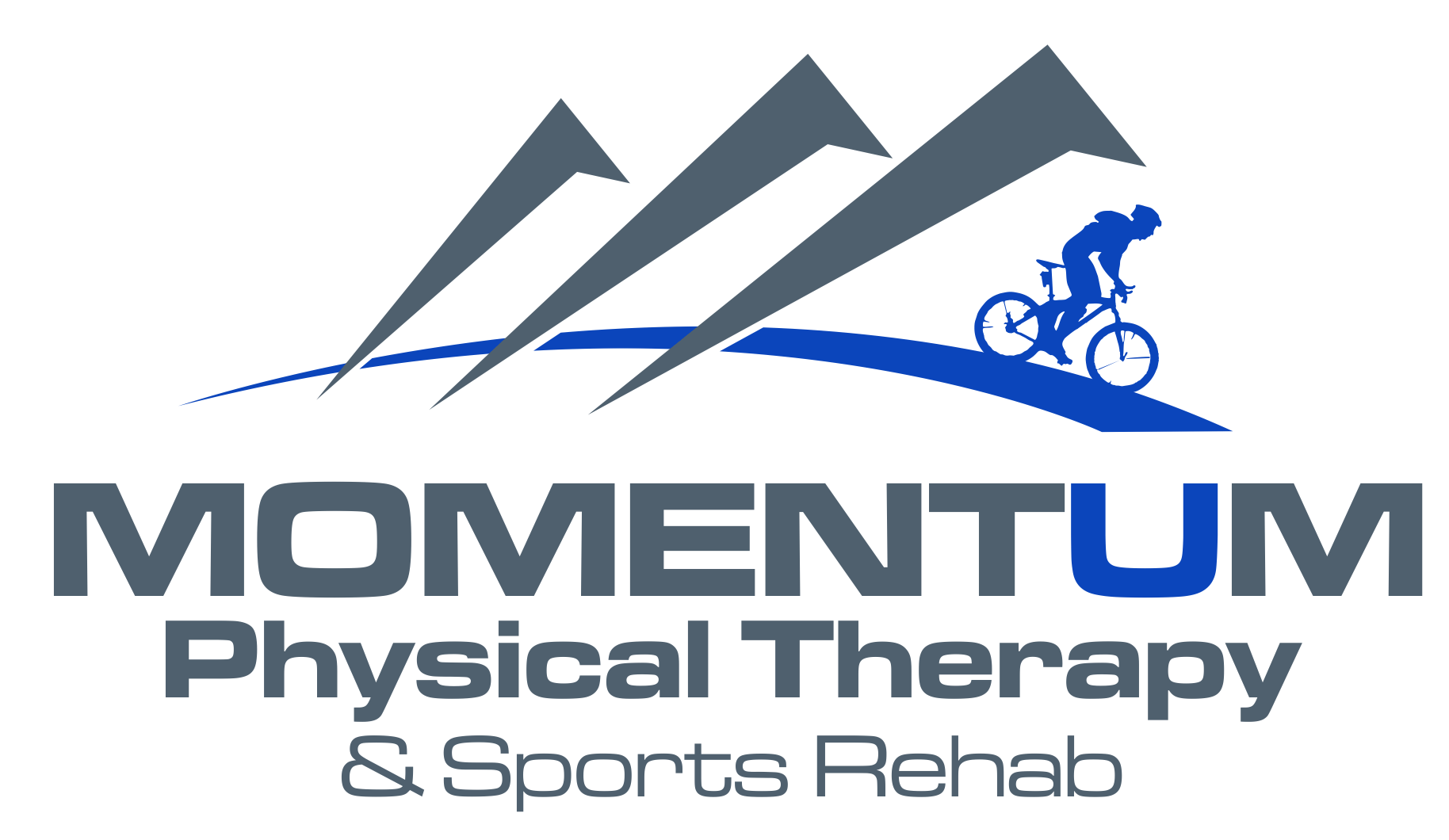How to Reduce Achilles Tendonitis Pain
Welcome to summer!
With the launch of summer, we are now seeing people flock to the mountains hiking, hitting the trails running, and sliding into those comfortable flip flops on the beach. Sounds nice, doesn’t it?
Well, with these changes in activity, we also start to see an uptick in clients seeking physiotherapy for help with Achilles tendonitis and/or heel pain. All those extra steps in the outdoors start to add up and sometimes, this can lead to Achilles tendonitis and heel pain.
Today I want to take a moment to connect with you to let you know what causes Achilles Tendonitis and Heel pain and how YOU can help reduce your Achilles Tendonitis or Heel pain today!
Before we get started, let me introduce myself. My name is Stephen Uhrbach and I am a physical therapist at MOMENTUM Physical Therapy in Okotoks, Alberta. I lead a team of talented physio therapists who treat injuries - like Achilles Tendonitis or heel pain - everyday!. I want to spend a few minutes today letting you know some of the ways you can help reduce your pain today.
First of all - let’s talk about what Achilles Tendonitis and Heel pain is (and what it means!).
What is the Achilles Tendon?
The Achilles tendon is a large tendon that is found at the bottom of the lower leg - connecting your calf muscles to the back of the heel. This thick tendon is used to forcefully push the foot downward (such as when running or climbing up a mountain) or absorb force when you land (such as when you jump off of a step). This Achilles tendon is STRONG.
Saying that, sometimes we can irritate this tendon, causing it to break down and become painful.
Common ways an Achilles tendon can get injured:
1. Overuse or Excessive Training:
Engaging in repetitive high-impact activities, particularly without proper rest or conditioning, can strain the Achilles tendon. Activities like running, jumping, or sudden changes in intensity or frequency of exercise without allowing adequate recovery time can increase the risk of Achilles tendon injury.
2. Sudden Increases in Physical Activity:
A rapid increase in physical activity levels, such as starting a new exercise program or suddenly intensifying your training regimen, can put excessive stress on the Achilles tendon.
3. Improper Footwear:
Wearing new shoes (or flip flops) that your body is not used to can put new levels of strain onto the Achilles tendon.
4. Tight Calf Muscles and Poor Flexibility:
Limited flexibility in the calf muscles and surrounding structures can lead to increased strain on the Achilles tendon.
5. Trauma or Accidents:
In some cases, traumatic events like a fall, direct impact to the back of the leg, or sudden forceful movements can result in Achilles tendon injuries.
When the Achilles Tendon is overused and irritated, it can start to break down. This breakdown is commonly known as “Achilles Tendonitis” - or the inflammation and breakdown of the achilles tendon that attaches the calf muscle to the heel.
Ok - so now that we know what Achilles Tendonitis is and how it can be caused. What does it feel like?
What does Achilles Tendonitis feel like?
With Achilles Tendonitis or Heel Pain, the most common symptom that people first experience is pain and tenderness along the lower calf, the Achilles tendon itself, or at the base of the heel (where the Achilles tendon attaches to the heel bone). Initially this pain is minor and does not last longer than a day or two.
If the injury is not attended to properly, you might begin to see swelling and a thickening of tendon on the back of the calf that shows that the tendon irritation is getting worse. Often people start to have significant calf or heel pain in the morning (when they get out of bed) or if they sit down for a while and then get up to walk. Unfortunately, if left untreated, Achilles tendonitis can lead to more serious injuries such as a tear or rupture of the tendon.
Yikes - we don’t want that.
Fortunately - if you are starting to feel Achilles or heel pain, there are three things you can do TODAY to start to reduce your Achilles Tendonitis pain. The advice we give people on day 1 of Achilles Tendonitis or heel pain physio is always the following:
How to Fix Heel Pain & Achilles Tendonitis:
1. Rest:
When it comes to Achilles pain, rest is crucial. Pain in your Achilles or Heel is the way that your body is saying “something that you are doing is hurting me”. Continuing to engage in activities that increase the pain can worsen your injury AND prolong your healing time.
Taking a break from high-impact exercises such as running or jumping, as they put significant strain on the Achilles tendon, will have a significant positive impact on your pain.
Instead, opt for low-impact activities like swimming or cycling that maintain cardiovascular fitness without stressing the tendon.
2. ROLL your Calves:
When your Achilles tendon gets irritated, your calf muscles tighten up. These tight calves put more strain on your Achilles, which in turn, further aggravates your Achilles Tendon and heel pain.
In physio, for any Achilles or heel pain, we always start off with the physio exercise that can loosen the calf muscles (and therefore, take some of the strain off of your injured Achilles Tendon).
PHYSIO EXERCISE #1 FOR ACHILLES PAIN: Calf Rolling
Rolling your calves is an excellent way to start loosening up your tight muscles. We use rolling (or pressure point therapy) to relax the tightened muscles. As the tight calf muscles relax, they will put less stress on the irritated Achilles tendon and heel.
Grab a muscle roller (or sturdy rolling pin), take a seat, and start rolling the calves with the muscle roller. Even better, if you have a friend nearby, lay down on your stomach with your feet over the end of a bed and have your partner roll your calf muscles for you.
The rolling motion should be fluid with small movements while you apply moderate pressure (it should feel slightly uncomfortable without bringing tears to your eyes).
Focus on rolling over the most tender parts of the calf muscle, and perform this for 4-5 minutes per calf.
3. STRETCH your Calves:
Once you have rolled your calf muscles, you then need to stretch them! Stretching a muscle after rolling it helps maintain the looseness that you just created.
For Achilles and heel pain, there are two specific physio exercises that we do daily to loosen the calf muscle. Follow the instructions below to effectively stretch out that tightened calf!
PHYSIO EXERCISE #2 FOR ACHILLES PAIN: The Gastrocnemius Stretch
Find a sturdy wall and stand arms length away from the wall. Place your hands on the wall.
Place the leg with the tight calf behind you and have the other leg slightly in front of you. Make sure that the knee stays straight and that your heel remains on the ground of the trailing leg at all times.
Gently lean forward into the wall until you feel a stretch through the back of the calf on the trailing leg. Hold the comfortable stretch for 30 seconds and repeat 3-4 times.
This stretch should feel comfortable!
PHYSIO EXERCISE #3 FOR ACHILLES PAIN: The Soleus Stretch
Again, find a sturdy wall and stand arms length away from the wall. Place your hands on the wall.
Place the leg with the tight calf behind you and have the other leg slightly in front of you. Make sure that the knee bends by 30 degrees and that your heel remains on the ground of the trailing leg at all times.
Gently lean forward into the wall until you feel a stretch through the back of the calf on the trailing leg. This stretch will feel a bit lower than the Gastrocnemius stretch. Hold the comfortable stretch for 30 seconds and repeat 3-4 times.
This stretch should also feel comfortable!
There you have it - three quick tips on how to reduce Achilles or heel pain today. Rest, rolling, and stretching are quick and easy things you can do at home to relieve any Achilles Tendonitis or heel pain that you might be feeling.
But what if this doesn’t take all of the pain away?
Treatment Options for Achilles Tendonitis:
Achilles and heel pain can be stubborn - especially if it has been bothering you for a while and you thought it would just go away on its own (don’t worry - we have all been there and done that!).
If this sounds like you, it's time to see a physiotherapist to help with that Achilles or Heel pain. The longer you let Achilles Tendonitis or heel pain brew, the longer your recovery journey will be.
Physiotherapy is an effective method of treating Achilles tendonitis.
Visit a Physiotherapist at MOMENTUM Physical Therapy.
At your visit with us at MOMENTUM Physical Therapy in Okotoks, our trained physical therapists will evaluate your Achilles and Heel pain to determine the root cause of your ongoing pain.
Your MOMENTUM physiotherapist will develop a treatment plan that will help you get back to your pain free living status. Treatment for these stubborn Achilles and heel pain may include:
Trigger point muscle release for Achilles pain
Intramuscular stimulation (IMS) for Achilles pain
Graston therapy for Achilles pain
Cupping for Achilles pain
Kinesiotaping for Achilles pain
Your physio will also develop a custom home exercise program that will likely include the rolling and stretching exercises (as above) with some additional strengthening exercises to facilitate healing through the Achilles tendon.
Your physical therapist will ensure that your calf muscle loosens up, your pain goes away, and that your Achilles tendon is restrengthened to keep the Achilles and Heel pain away.
All in all, physiotherapy will help reduce your pain and help kickstart the healing process to help you kick that Achilles and heel pain for good. With the help of a physiotherapist, you can reduce your pain, improve your mobility, and prevent further injury.
If you are dealing with Achilles pain or Heel pain, call MOMENTUM Physical Therapy in Okotoks today at 403-982-5600 to connect with one of our talented physiotherapists. If you would like to book online, you can jump into our schedule here.
Our award-winning team here at MOMENTUM Physical Therapy- in Okotoks, is ready to help! Give us a call today at 403-982-5600 to get booked in with one of our awesome physiotherapists, massage therapists, or trainers. Or feel free to book online HERE!
We’re here for you!
Frequently Asked Questions
What are the early warning signs of Achilles Tendonitis?
Signs of Achilles tendonitis include:
Pain through the lower part of the calf or into the heel
Tenderness to touch through the lower calf or into the heel
Stiffness or pain in the morning or after siting for a prolonged period of time through the lower part of the calf or into the heel
Warmth or swelling through the lower part of the calf or into the heel
Pain with activity through the lower part of the calf into the heel
What is the best way to treat Achilles Tendonitis?
Treatment for Achilles Tendonitis includes rest, rolling, and stretching of the Achilles tendon. Consulting with a physical therapist is the best way to maximize your healing.
Can physiotherapy help treat Achilles Tendonitis?
Yes! Physiotherapy is an effective treatment option for Achilles Tendonitis. A physiotherapist will provide hands on treatment and exercises to reduce your pain and heal your Achilles Tendon injury.
Meet our Registered physiotherapists:
Meet our Kinesiologists:
Momentum Physical Therapy, located in Okotoks, Alberta, is ‘Here for YOU’.
If you are experiencing shoulder pain, have a back injury, or you just want to learn more about how massage therapy and physiotherapy can help heal your pain, don’t delay and call MOMENTUM Physical Therapy today. You can reach registered physiotherapists and massage therapists at MOMENTUM, located in Okotoks, by calling 403-982-5600. We look forward to helping you feel you best again.











